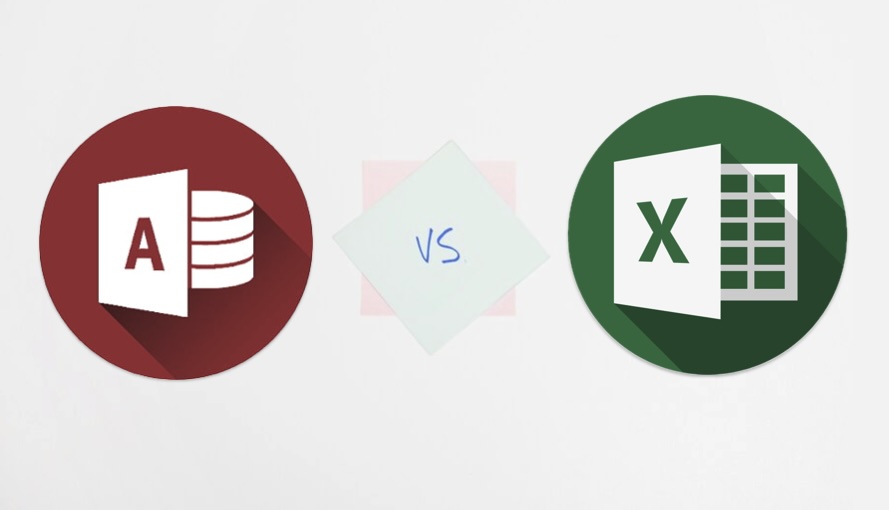Microsoft Access is a powerful tool for database management, widely used across various industries for its versatility in handling data-centric applications. Understanding the Microsoft Access pros and cons is crucial for developers, business analysts, and companies looking to optimize their data management practices. This article will delve into the benefits and limitations of Microsoft Access, providing valuable insights into its functionality and application.
The Benefits of Using Microsoft Access
Microsoft Access offers a plethora of advantages for users across various domains, ranging from ease of use to cost-effectiveness and versatile data handling capabilities. Let’s delve into these benefits in detail:
Easy to Use and Develop
One of the most significant Microsoft Access pros is its user-friendly interface and ease of use. Even users with limited technical skills can create a functional database and perform complex data analysis, thanks to its intuitive design and comprehensive tutorial support.
- Intuitive Design: Microsoft Access boasts an intuitive design that simplifies the process of creating and managing databases. Users can navigate through its features effortlessly, reducing the learning curve associated with database management systems (DBMS).
- Comprehensive Tutorial Support: For beginners and experienced users alike, Microsoft Access offers extensive tutorial resources, including documentation, online guides, and community forums. These resources empower users to harness the full potential of the software and troubleshoot any issues they encounter effectively.
- Integrated Development Environment (IDE): Within Microsoft Access, users have access to a unified environment where they can seamlessly develop forms, queries, reports, and macros. This cohesive framework streamlines the database development process and enhances productivity.
- Template Availability: To expedite database setup, Microsoft Access provides a wide range of templates catering to various industries and use cases. These templates serve as pre-designed frameworks that users can customize to meet their specific requirements, saving time and effort.
Cost-Effective for Small to Medium-Sized Projects
For small to medium-sized enterprises (SMEs), cost is a crucial factor. Microsoft Access is relatively inexpensive compared to other database systems, making it an attractive option for smaller projects.
- Lower Software Costs: Microsoft Access is available as part of the Microsoft Office suite or as a standalone application, both of which are offered at reasonable prices. Compared to enterprise-grade database systems, the upfront investment required for Microsoft Access is significantly lower, making it an appealing choice for budget-conscious users.
- Reduced Development Time: The streamlined development process facilitated by Microsoft Access translates to time savings for users. With its intuitive interface and comprehensive feature set, users can expedite database creation and modification tasks, thereby reducing the overall development time and associated costs.
Versatile Data Handling and Integration
Microsoft Access excels in data integration and scalability within its capacity. It can connect to various data sources including SQL Server and other ODBC-compliant databases, facilitating the integration of data from multiple sources into a single database.
- Data Source Connectivity: Microsoft Access supports connectivity to various data sources, including SQL Server, Oracle, MySQL, and other ODBC-compliant databases. This enables users to consolidate data from disparate sources into a single database, fostering data centralization and consistency.
- Import and Export Features: With built-in import and export functionality, Microsoft Access facilitates the seamless exchange of data with other Microsoft products such as Excel and SharePoint. Users can effortlessly import data from external sources into Access databases or export Access data to formats compatible with other applications, enhancing data interoperability and collaboration.
The Limitations of Microsoft Access
While Microsoft Access offers numerous benefits for database management, it also has certain limitations that users should be aware of. Understanding these limitations is crucial for making informed decisions about database solutions. Let’s explore the key limitations of Microsoft Access in detail:
Scalability Concerns
When it comes to handling large volumes of data or supporting many simultaneous users, Microsoft Access may not be the best option. It’s designed more for small to medium-sized databases and user groups.
- Database Size Limit: Microsoft Access imposes a strict size limit of 2 GB for individual databases. This limitation can become a bottleneck in environments with extensive datasets, as the database size may quickly reach the maximum threshold, hindering further data storage and management.
- Performance Issues: As the size of the database grows or the number of simultaneous users increases, Microsoft Access may experience performance issues. These performance issues can manifest as slowdowns in query processing, form loading times, and overall responsiveness, adversely affecting user experience and efficiency.
Limited Web Integration
In today’s digital age, the need for web-based applications is ever-increasing. A notable Microsoft Access con is its limited capabilities in web integration and development.
- Desktop-Oriented Design: Microsoft Access is primarily designed for desktop use, with its features optimized for local database management and client-server interactions. While it’s possible to publish Access data to the web using SharePoint or other methods, the resulting web applications may lack the robustness and scalability of dedicated web application platforms.
- Limited Web Development Tools: Unlike comprehensive web development platforms like ASP.NET or PHP frameworks, Microsoft Access lacks sophisticated tools for web application development. This limitation restricts the customization and extensibility of web-based solutions built on Access databases, limiting their suitability for complex web projects.
Comparing Microsoft Access with Other Database Systems

When evaluating whether to use Microsoft Access, it’s essential to compare it with other database systems like SQL Server, Oracle, or MySQL. Each has its strengths and weaknesses, depending on the project requirements.
Access vs. SQL Server
Microsoft Access and SQL Server, both developed by Microsoft, serve distinct purposes and target different segments of the database market. Here’s a comparison between the two:
| Aspect | Microsoft Access | SQL Server |
| Suitability | Ideal for small to medium-sized databases and user groups. | Well-suited for larger, more complex applications requiring robust transactional support and extensive security features. |
| Scalability | Limited scalability, with a maximum database size of 2 GB. | Highly scalable, capable of handling large volumes of data and supporting thousands of concurrent users. |
| Security | Limited security features, suitable for non-critical data storage. | Offers advanced security features such as encryption, role-based access control, and auditing, making it suitable for enterprise-level applications with stringent security requirements. |
| Cost | Relatively affordable for small-scale deployments. | Higher initial investment but offers comprehensive features and scalability, providing long-term value for larger projects. |
Access vs. MySQL
MySQL, an open-source relational database management system, is widely used for web-based applications and environments requiring high scalability and performance. Let’s compare MySQL with Microsoft Access:
| Aspect | Microsoft Access | MySQL |
| Suitability | Desktop-oriented, suitable for small to medium-sized databases. | Ideal for web-based applications requiring a database with high scalability and performance. |
| Scalability | Limited scalability due to database size limitations. | Highly scalable, capable of handling large datasets and supporting concurrent users efficiently. |
| Web Integration | Limited web integration capabilities, primarily designed for desktop use. | Well-suited for web development, with robust support for web application frameworks and technologies. |
| Community Support | Strong user community and extensive documentation available. | Extensive community support and a vast ecosystem of tools, plugins, and resources. |
Practical Applications of Microsoft Access
Understanding the practical applications of Microsoft Access helps in realizing its potential. It is commonly used in:
Inventory Systems
Small businesses often rely on Microsoft Access for managing inventory data efficiently. Here’s how Access is used in inventory management:
- Stock Levels Management: Access enables businesses to track and manage stock levels effectively. Users can create tables to store information about product quantities, categories, and locations, allowing for real-time monitoring of inventory levels.
- Order Details Tracking: With Access, businesses can maintain comprehensive records of orders, including purchase orders, sales orders, and order fulfillment status. This facilitates efficient order processing and ensures timely fulfillment of customer requests.
- Supplier Information Management: Access serves as a centralized repository for storing supplier information, such as contact details, pricing agreements, and delivery schedules. By organizing supplier data in Access databases, businesses can streamline procurement processes and maintain fruitful supplier relationships.
Contact Management
Another practical application of Microsoft Access is in contact management, particularly for small to mid-sized businesses. Here’s how Access is utilized in contact management:
- Storing Contact Information: Access databases serve as a centralized repository for storing contact information, including customer details, vendor contacts, and employee records. Users can create tables to capture essential contact fields such as names, addresses, phone numbers, and email addresses.
- Managing Customer Relations: Access facilitates effective customer relationship management (CRM) by providing tools for organizing and tracking interactions with customers. Users can create forms and reports to record customer inquiries, sales activities, and follow-up communications, enabling personalized customer engagement and relationship-building efforts.
- Segmenting Contacts: Access allows businesses to segment their contacts based on various criteria such as demographics, purchase history, or geographic location. This segmentation enables targeted marketing campaigns and tailored communication strategies, leading to higher customer satisfaction and loyalty.
Conclusion
Evaluating the Microsoft Access pros and cons is essential for any business or individual considering it for database management. While it offers significant advantages in terms of cost, ease of use, and integration, its limitations in scalability and web integration may deter larger enterprises. For small to medium-sized projects, however, Microsoft Access remains a strong contender among database solutions.
FAQ
Microsoft Access offers ease of use, cost-effectiveness, and versatile data handling capabilities.
Microsoft Access faces scalability concerns, limited web integration, and should be compared with other databases.
Microsoft Access is used for inventory management and contact management tasks.



